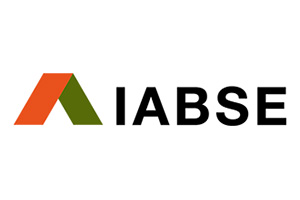Accuracy Assessment of Nonlinear Seismic Displacement Demand Predicted by Simplified Methods for the Plateau Range of Design Response Spectra
| Author(s): |
Pierino Lestuzzi
Lorenzo Diana |
|---|---|
| Medium: | journal article |
| Language(s): | English |
| Published in: | Advances in Civil Engineering, 2019, v. 2019 |
| Page(s): | 1-16 |
| DOI: | 10.1155/2019/1396019 |
| Abstract: |
The nonlinear seismic displacement demand prediction for low-period structures, i.e., with an initial fundamental period situated in the plateau of design response spectra, is studied. In Eurocode 8, the computation of seismic displacement demands is essentially based on a simplified method called the N2 method. Alternative approaches using linear computation with increased damping ratio are common in other parts of the world. The accuracy of three methods for seismic displacement demand prediction is carefully examined for the plateau range of Type-1 soil class response spectra of Eurocode 8. The accuracy is assessed through comparing the displacement demand computed using nonlinear time-history analysis (NLTHA) with predictions using simplified methods. The N2 method, a recently proposed optimization of the N2 method, and the Lin and Miranda method are compared. Nonlinear single-degree-of-freedom systems are subjected to several sets of recorded earthquakes that are modified to match design response spectra prescribed by Eurocode 8. The shape of Eurocode 8 response spectra after the plateau is defined by a constant pseudovelocity range (1/T). However, the slope of this declining branch may be specified using precise spectral microzonation investigation. However, the N2 method has been found to be particularly inaccurate with certain microzonation response spectra that are characterized by a gently decreasing branch after the plateau. The present study investigates the impact of the slope of the decreasing branch after the plateau of response spectra on the accuracy of displacement demand predictions. The results show that the accuracy domain of the N2 method is restricted to strength reduction factor values around 3.5. Using the N2 method to predict displacement demands leads to significant overestimations for strength reduction factors smaller than 2.5 and to significant underestimations for strength reduction factors larger than 4. Fortunately, the optimized N2 method leads to accurate results for the whole range of strength reduction factors. For small values of strength reduction factors, up to 2.5, the optimized N2 method and the Lin and Miranda method both provide accurate displacement demand predictions. However, the accuracy of displacement demand prediction strongly depends on the shape of the response spectrum after the plateau. A gently decreasing branch after the plateau affects the accuracy of displacement demand predictions. A threshold value of 0.75 for the exponent of the decreasing branch (1/Tα) after the plateau is proposed. This issue should be considered for the ongoing developments of Eurocode 8. |
| Copyright: | © Pierino Lestuzzi and Lorenzo Diana et al. |
| License: | This creative work has been published under the Creative Commons Attribution 4.0 International (CC-BY 4.0) license which allows copying, and redistribution as well as adaptation of the original work provided appropriate credit is given to the original author and the conditions of the license are met. |
1.6 MB
- About this
data sheet - Reference-ID
10375652 - Published on:
23/09/2019 - Last updated on:
02/06/2021



